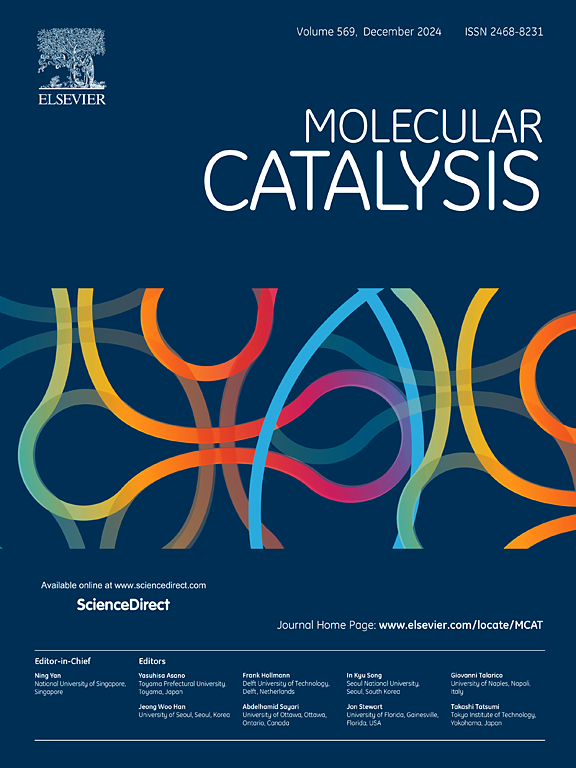Analysis of SCR properties of metal oxide catalysts enhanced by non-thermal plasma - Promoting effect of NH3
IF 3.9
2区 化学
Q2 CHEMISTRY, PHYSICAL
引用次数: 0
Abstract
Traditional methods of preparing catalysts suffer from suboptimal selectivity and activity. Consequently, this study investigated the modification of iron–cerium (Fe–Ce) oxide catalysts through a non-thermal plasma technique to enhance their reaction activity. Ammonia (NH3), utilized as the reaction atmosphere during plasma treatment, plays a crucial role in enhancing denitration performance. Among them, the catalyst displays the best low-temperature SCR activity in 40 % NH3/N2 atmosphere. The initial NO conversion rate of NH3-SCR of Fe/Al2O3 catalyst at 330 °C can reach 95.3 % when the NO input was 1000ppm. The characterization results indicated that the addition of NH3 transformed the active components of the catalyst from Fe2O3 to Fe3O4 and Fe4 N, and increased the nitrogen content in the catalyst, thus enhancing the synergistic effect and redox capacity of the catalysts, which was conducive to the adsorption and activation of the reactants. Additionally, the dispersion of catalyst and the interaction strength between active component and support were enhanced. In addition, the sulfur resistance of the catalyst doped with Ce was significantly improved. This study presented catalysts modified using a non-thermal plasma technique, effectively enhancing catalyst dispersion and increase the content of N, providing new insights for advanced catalyst modification.

求助全文
约1分钟内获得全文
求助全文
来源期刊

Molecular Catalysis
Chemical Engineering-Process Chemistry and Technology
CiteScore
6.90
自引率
10.90%
发文量
700
审稿时长
40 days
期刊介绍:
Molecular Catalysis publishes full papers that are original, rigorous, and scholarly contributions examining the molecular and atomic aspects of catalytic activation and reaction mechanisms. The fields covered are:
Heterogeneous catalysis including immobilized molecular catalysts
Homogeneous catalysis including organocatalysis, organometallic catalysis and biocatalysis
Photo- and electrochemistry
Theoretical aspects of catalysis analyzed by computational methods
 求助内容:
求助内容: 应助结果提醒方式:
应助结果提醒方式:


